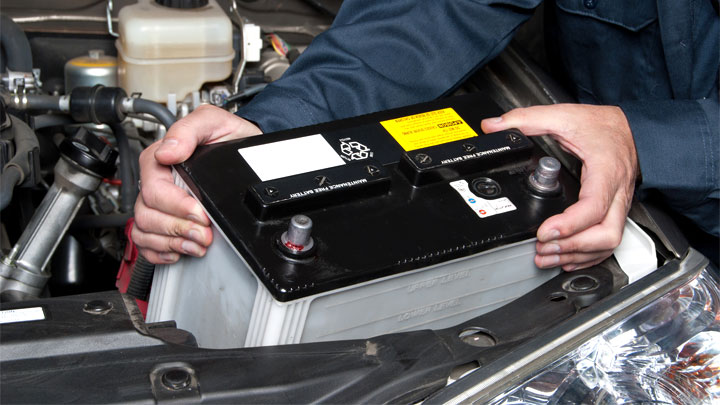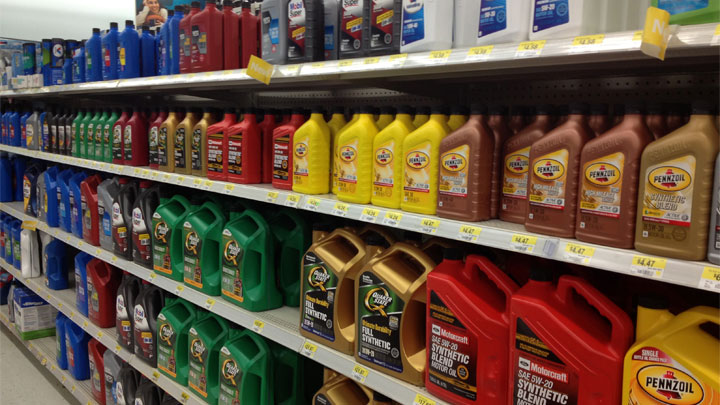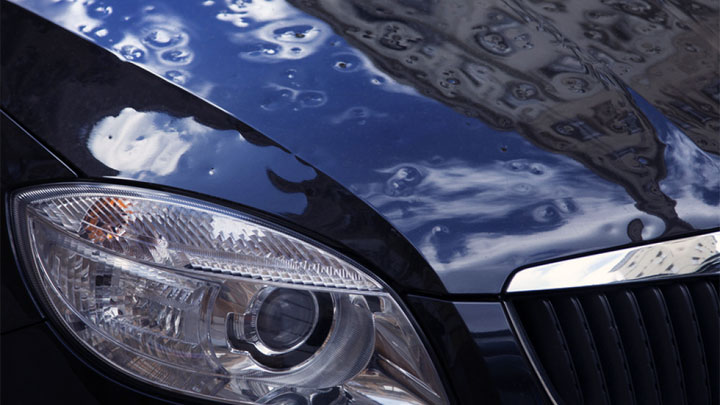Last Updated on January 12, 2022
Your car battery is something each person knows about, even if you think you don’t know anything about cars. Your battery is the item that dies and your car won’t start. It’s what you have to “Jump” if you leave an interior light on overnight.
Basically, every car needs a battery, and some need more than just one. Whether you’ve never replaced a car battery before or are in a store’s auto parts section shopping for a new battery right now, you may be in for a surprise when you first pick one up.
Car batteries are not light! But just how much do they weigh? And why do they weigh so much? Keep reading to learn more.
Read Also: How Long Do Car Batteries Last?
Why Does Battery Weight Matter?
Ounces equal pounds, and pounds equal pain. That’s what I’ve been taught when packing a backpack for an expedition, and it’s the same concept for your car. Every little thing you add to your vehicle adds up, and the more you do it, the worse your efficiency will be.
With a heavier car, you’ll need to burn more gas or energy to get it moving the same distance. This means your car won’t accelerate as quickly, and you’ll get worse fuel mileage, leading to more costs down the line.
Your battery, of course, abides by the same rules. The heavier your battery, the heavier your car. Generally, the Wet-Cell or lead-acid batteries are going to be heavier because they are easier to manufacture, cheaper, and aren’t as refined. In the “car world”, this normally means heavier.
But first off, you might be surprised to hear that there are different kinds of batteries out there.
Types of Car Batteries
Flooded Lead Acid
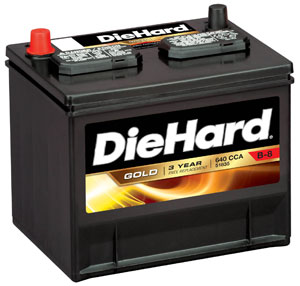 This is the most common and oldest type of “Wet-Cell” battery out there. It’s the cheapest option that consists of 6 cells usually, in an electrolyte solution. It must be installed vertically to avoid spilling the solution, if at all possible.
This is the most common and oldest type of “Wet-Cell” battery out there. It’s the cheapest option that consists of 6 cells usually, in an electrolyte solution. It must be installed vertically to avoid spilling the solution, if at all possible.
Generally, these types of batteries have a maximum output of 12.6V, but this could vary depending on several factors. This battery traditionally needs to be topped off with an electrolyte solution to maintain its effectiveness. This is because the battery will consume the water within the solution during normal operation.
This type of battery is the easiest to install and, since every auto parts store has a battery for your car, you can have someone help you install it right in the parking lot!
However, if you are going to be installing this battery for the first time yourself, make sure you keep the battery VERTICAL so as not to spill the electrolyte solution inside. This will make for a much better time.
A subset of this battery type is called the “Sealed Lead Acid Battery” or SLA, for short. This is the same as a Flooded Lead Acid, but it’s sealed completely and has a different solution that doesn’t need regular filling, which is completely beyond me.
Some Ph.D. chemist found a way for batteries to not consume water and developed a patent before the Lead companies could get to him/her, apparently. I’m not a conspiracy theorist, I’m just asking the right questions here. Ok?
Enhanced Flooded Battery
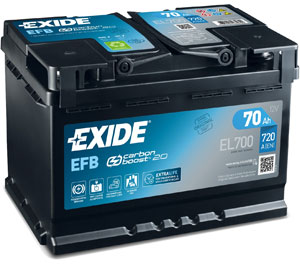 Essentially a high-performance version of the wet cell battery, the enhanced flooded battery uses a narrower grid, and the battery cells have more plates which increase the reactive surface of the battery as a whole.
Essentially a high-performance version of the wet cell battery, the enhanced flooded battery uses a narrower grid, and the battery cells have more plates which increase the reactive surface of the battery as a whole.
All this results in over twice the “Cold Cranking Amps” (basically how hard your car starts) than the normal battery you get from NAPA or Autozone.
Absorbent Glass Mat
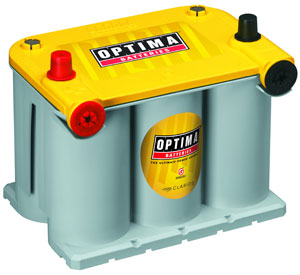 Another of the more common batteries out there is called the AGM battery. This is a battery that uses absorbent fiberglass to hold the electrolyte solution, creating a spill-proof, more efficient battery perfect for stop-start applications.
Another of the more common batteries out there is called the AGM battery. This is a battery that uses absorbent fiberglass to hold the electrolyte solution, creating a spill-proof, more efficient battery perfect for stop-start applications.
AGM batteries are almost always a lighter weight than a traditional lead-acid battery, cost 20-100% more than a standard wet-cell, but they can last 2-3x longer, and tend to be more reliable. This is the one I’d want. Buy once, cry once, right?
Lithium-Ion Batteries
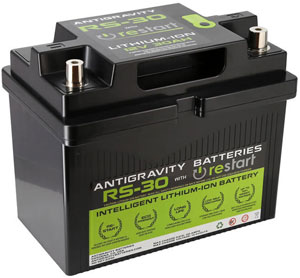 When you’re searching for batteries based on weight, you’ll eventually come across some of the most efficient, expensive, and lightest batteries out there.
When you’re searching for batteries based on weight, you’ll eventually come across some of the most efficient, expensive, and lightest batteries out there.
Optima makes a great case for those who want batteries for their race cars as they only weigh 10lbs, and don’t have a solution that will slosh around as you commit to each corner.
This also seems to be a big concern for those that go on the big desert races as they need to be able to count on a lightweight battery to start even when going 100 mph over bumps and through rivers.
It’s one of those decisions you’re going to have to make for yourself… how important are battery weight and price to you for what you do?
Weight Distribution

If you’ve dabbled in higher-performance vehicles of the German variety, you may have noticed that the battery is sometimes located in the trunk instead of under the hood. Why is that?
Well, with performance cars, it’s all about weight distribution and if you can move 40lbs of battery from the front of the car (where more weight is) to the back, you’ll have what many car enthusiasts refer to as “better weight distribution”.
Without getting too far into the weeds here, all cars rely on having a proportionate amount of mass over each of their four wheels. This means the tires will have some force to push the rubber onto the road so you don’t lose traction when you brake quickly.
Generally, cars are going to always have more weight over the front wheels because that’s where the engine, transmission, cooling system, intake, steering rack, and all sorts of dense machinery help you get to where you’re going.
This means that most cars are going to have a bias towards the front of the car when they are turning, braking, and accelerating. If you have too much weight up front, and not enough over the rear wheels, your car won’t be balanced when you take part in a track day at your local race track or take on the Nürburgring.
You may find the rear end stepping out, at which point you’ll have to correct with counter steer. So, if you move some weight (i.e. the battery) from the front of the car to the rear, you’re reallocating some of that weight to get a little bit more traction from those rear wheels.
How Much Does a Car Battery Weight?
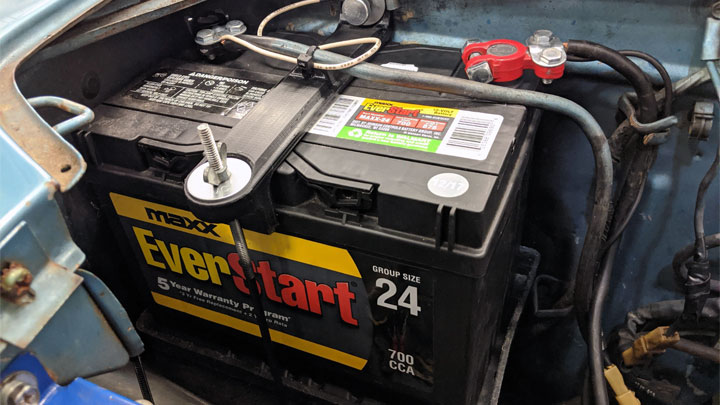
You may be thinking, all this info is great, but how much does a car battery actually weigh?
A typical car battery weighs around 40 pounds on average. This is for the most commonly used flooded lead acid type. There will be plenty of exceptions with some lighter and some heavier but most will fall somewhere between 35 to 45 lbs. range.
See below for some examples of OEM batteries found in popular cars and trucks.
Car Battery Weight Chart (for 20 Popular Vehicles)
Here are some examples of battery weights found in many of the top-selling cars and trucks of 2021.
When possible, weights of OEM (original equipment manufacturer) batteries were used. For others, common replacement brands for vehicle manufacturers were used. What’s interesting is that OEM batteries in general are much heavier than their aftermarket brands often used for replacement.
| Vehicle | Battery Weight | Brand | CCA |
|---|---|---|---|
| Audi A5 | 57.3 lbs | Varta (OEM) | 520 |
| BMW 3-Series | 45.3 lbs | Duralast | 680 |
| Chevy Silverado 1500 | 42.1 lbs | ACDelco | 800 |
| Dodge Charger | 42.9 lbs | DieHard | 800 |
| Dodge Durango | 53.6 lbs | Mopar (OEM) | 700 |
| Ford Explorer | 47.3 lbs | Motorcraft (OEM) | 760 |
| Ford F-150 | 47.3 lbs | Motorcraft (OEM) | 760 |
| Ford Mustang | 32.0 lbs | Motorcraft (OEM) | 590 |
| Honda Accord | 27.7 lbs | Interstate | 500 |
| Honda CR-V | 39.0 lbs | NAPA | 600 |
| Honda Pilot | 38.9 lbs | Interstate | 730 |
| Jeep Wrangler | 53.6 lbs | Mopar (OEM) | 700 |
| Mazda CX-5 | 32.3 lbs | Interstate | 550 |
| Nissan Rogue | 45.6 lbs | ACDelco | 760 |
| Ram 1500 | 58.0 lbs | Mopar (OEM) | 850 |
| Subaru Forester | 31.7 lbs | Optima | 720 |
| Toyota Corolla | 33.5 lbs | Interstate | 650 |
| Toyota Highlander | 37.6 lbs | Interstate | 615 |
| Toyota RAV4 | 33.5 lbs | Interstate | 650 |
| Toyota Tacoma | 35.8 lbs | Interstate | 600 |
Why Are Car Batteries So Heavy?
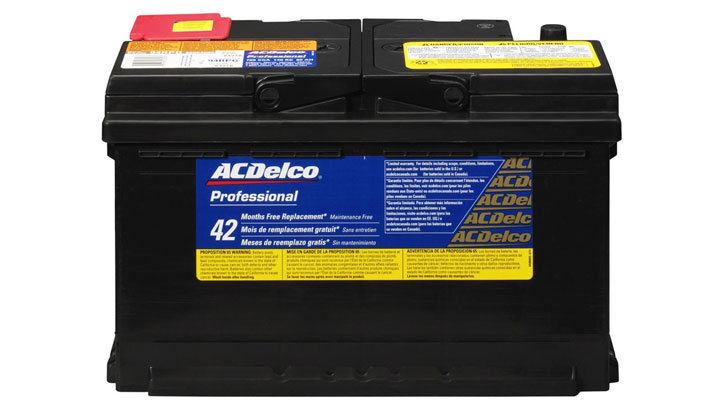
Car batteries are so heavy because they are normally filled with dense lead battery cells. For the standard car, there are usually 6 of these cells made from one of the more dense elements on the periodic table!
Then, you have to think that it’s usually a 12 x 8 x 5 box filled with lead and electrolyte solution and you can imagine why it’s so heavy.
Now, this isn’t to say there haven’t been advancements made in battery weight. AGM, Gel, and Lithium-Ion batteries all are at least 40% lighter than traditional batteries, but all cost quite a bit more.
So, with a lighter battery comes a higher cost, although the higher-end batteries will last longer so you could still come out on top if you don’t have to replace your battery every other year.
Are Heavier Batteries Better?
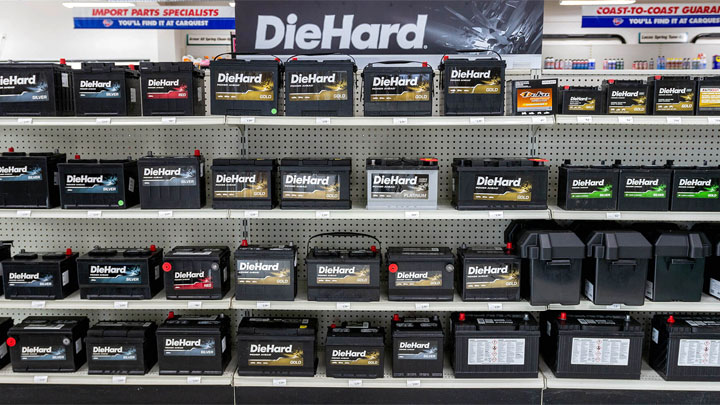
Not necessarily. If we are talking the same size battery, a heavier battery will likely be cheaper and more readily available in your town.
But as far as longevity, cold-cranking amps, and overall power, the lighter weight batteries are going to be better for you. The only issue here is price because the lighter batteries are going to be more expensive and harder to find for the average consumer.
This comes down to you. Do you value ease or optimal performance?
Related: How Long Does It Take to Charge a Car Battery?
How Can You Determine the Weight of Your Car Battery?
If you have a home scale, you could always take the battery out and weigh it yourself, but I wouldn’t do it inside because the lead, corrosion, and solution would get everywhere.
An easier method is to look at the label on your battery. It will usually tell you how much that battery weighed from the factory. Please keep in mind that this weight will vary slightly as your wet cell battery uses up the water within the electrolyte solution!

